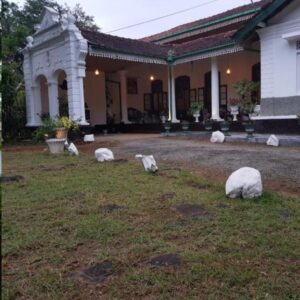Galkanda Walawwa is another example of Sri Lanka’s traditional manor houses, reflecting the cultural and architectural heritage of the island. Although not as widely known as some other walauwas, Galkanda Walawwa embodies the historical significance and grandeur typical of these aristocratic residences.
Historical Background
Like other walauwas, Galkanda Walawwa was likely the residence of a prominent and influential family, typically of aristocratic or chieftain status. These manor houses were central to the social, political, and economic life of the regions they were located in. The head of the household often played a significant role in local governance, land administration, and the maintenance of law and order.
Architectural Features
Galkanda Walawwa, in line with other walauwas, would have featured traditional Sri Lankan architectural elements. These typically include expansive courtyards, high ceilings to keep the interiors cool, and intricately carved wooden elements such as doors, windows, and pillars. The structure might also have a large central hall, used for family gatherings and official meetings, and wide verandas that provide shade and a place for social interactions.
The design of such walauwas often reflects a blend of local architectural styles with influences from colonial architecture, depending on the period in which it was built. This mix of styles is a hallmark of Sri Lankan walauwas, symbolizing the integration of different cultural influences over the centuries.
Social and Cultural Role
Galkanda Walawwa, like other walauwas, would have been more than just a residence. It would have served as a hub for the local community, where decisions affecting the surrounding villages and lands were made. The manor house would have been a symbol of the family’s status and power, often hosting important social and religious events.
Current Status
The current status of Galkanda Walawwa may vary, as many such walauwas in Sri Lanka have been either preserved, repurposed, or remain in private hands. Some walauwas have been converted into museums, boutique hotels, or cultural centers, while others continue to serve as private residences, preserving their historical and cultural legacy.
Galkanda Walawwa, like other walauwas, is a testament to the rich history and cultural heritage of Sri Lanka, offering a glimpse into the lifestyle and social structures of the country’s past aristocracy









